Real eState
Buying or selling – key projections for Canadian real estate in 2021
|
|


Human beings are obsessed with knowing the future. Despite all the evidence to the contrary – shoddy weather reports, champions getting knocked-out in the first round of the playoffs by veritable nobodies – we cling to this idea that we can see what’s coming. It’s a comforting fantasy, sweet in its naivete; one that assumes our daily chaos is really just the window-dressing for an otherwise orderly world.
So it’s rather fitting – and actually predictable – that after a year where every real estate projection was blown to bits by an utterly unforeseen housing boom, 2021 is already awash with a shower of predictions for the Canadian real estate market.
What follows is a selection of projections for the Canadian housing market from some notable experts –and whether Mortgage Broker News is buying or selling each one.
CIBC’s base-case scenario: Canadian home prices rise by 2.4%
CIBC recently came out with one of the banking sector’s more optimistic views for the Canadian housing market, a modest increase of 2.4% in real estate prices by October. (In December, RBC projected an 8% decline.) That’s the bank’s base-case scenario, or what could be expected if conditions today are allowed to continue. CIBC’s worst-case scenario involves a 6.9% decrease in home prices, while its best-case projection is an increase of 11%.
Buy or sell? Sell.
A 2.4% increase would place 2021 slightly below 2018’s increase of 2.51%, which seems unlikely. Remember that 2018 marked a cooldown period for Vancouver and the continuation of market softness across the Prairies, in Newfoundland, and, to a lesser extent, in New Brunswick. The current low interest rate environment has energized buyers from coast-to-coast, and prices have a long way to go in cities like Edmonton, Saskatoon, and Saint John before sellers will have trouble getting the prices they’re after.
Even though businesses will continue to falter as COVID-19 lockdowns drag on, the majority of the people who will be affected will be renters, not homeowners, so the possibility of a surge of inventory hitting the market and keeping prices in check is not one to bank on. Dwindling supply might hamper the number of sales that take place, but it will only increase prices. CREA expects the average home price to increase by 9.1% in 2021.
CIBC’s best-case scenario is far more likely than its base-case, although buyers might wonder who it’s actually “best” for.
“Supply shocks” could devastate Vancouver, Toronto markets
Investment research firm Veritas predicted that two possible “supply shocks” could lead to plummeting home prices: the liquidation of rental properties by investors and a catastrophic end to the country’s mortgage deferral experiment.
In exploring the latter possibility, Veritas ran three scenarios where between 5% and 15% of homes with deferred mortgages found their way on to the market after their deferral periods ended, resulting in real estate prices falling by 4-11% nationally, 10-17% in Vancouver, and 15-26% in Toronto.
Buy or sell? Sell.
Considering the fact that borrowers have been exiting deferral programs left and right since September and have yet to desperately flood the market with supply, there is little evidence that even 5% of deferred mortgages, let alone 10% or 15%, will prove so problematic that borrowers will have to liquidate their properties.
By October 31, the number of deferred mortgages at Canada’s largest banks totaled less than 70,000 and was 86.3% lower than in the previous quarter. In December, RBC announced that as of the end of October 2020, 90% of the deferrals offered through the bank’s client relief program had expired. Only 2% of RBC’s deferred mortgages had slipped into delinquency at that point, and a third of those were delinquent prior to the deferral being put in place.
Some borrowers will fall through the cracks and have to sell, but a 15% decrease in the average home price in Toronto? That would require an utter catastrophe.
Regarding investors, some will have to crash out of the condo market, particularly those who were using their properties as Airbnb’s and are now painfully cash flow negative each month. Many won’t be able to carry their properties until a flood of vaccinated travellers return to their cities, nor will they be able to afford to rent their properties long-term at today’s lower rental rates. But many will resist the urge to sell, knowing that the return of international students and other immigrant renters is inevitable, and that rents and condo prices will once again be on the rise.
Ex-urbs will see more activity than major urban cores
This projection comes courtesy of, among others, Moody’s, who said in late 2020 that it expects to see “greater resilience in lower-density markets outside Canada’s large urban cores,” driven by demand for properties with more space for working from home. Smaller, more affordable markets, Moody’s said, “will particularly benefit from this trend.”
Buy or sell? Buy.
This one’s a bit of a no-brainer, and not simply because of the new work-from-home reality so many of us are still adapting to. Remote work has simply juiced a trend that was already intensifying in Canada’s most active real estate markets: drive until you qualify. Now that remote work has freed so many Canadians from having to live within commuting distance of their jobs, they are able to purchase the properties they want essentially anywhere they feel comfortable living.
This shift in demand comes at an opportune time, when home prices in major markets like Toronto, Ottawa, Montreal, Victoria, and Vancouver are rising at a rate so far beyond that of their residents’ wage growth that moving hours away is the only way most of them will ever be able to afford a home.
But the secondary markets being buoyed by the urban exodus are not likely to remain affordable alternatives for long. Competition is already flaring up in off-the-beaten-path communities like Bancroft, Ontario, where the average home price in November 2020 was 24.3% higher than a year before, and in Woodstock, Ontario – population 40,000 – which saw its benchmark price for single-family homes leap 28.4% year-over-year in November.
It will be interesting to see just how much homeowners used to big city amenities such as widely available healthcare, abundant schools, and eclectic nightlife will be willing to sacrifice in order to find affordable housing. One assumes there has to be a limit, particularly for younger buyers who have proven willing to spend ridiculous sums on rent to live close to the action. But in a freshly birthed, post-COVID world, who can be sure?
MBN’s call
There will surely come a time when Canada’s most reliable housing markets run out of steam, properties start piling up, and prices begin retreating. (Experts have, after all, been calling the growth being seen in the country’s real estate prices “unsustainable” for about seven years now.) Mortgage Broker News just doesn’t see it happening in 2021.
After 2020’s feeding frenzy, we expect the overall number of sales to suffer this year, not because of a lack of demand but because of a lack of available inventory. Long-time single-family owners who refinanced at today’s lower rates are sitting quite pretty and may have even less reason to sell. The booms seen in cities like Fredericton, Regina, and Quebec City took a major bite out of some of Canada’s few well-stocked housing markets. Without any data modelling to rely on, we still see sales holding their own against historical averages, but coming up somewhat short compared to 2020, probably by about 2-4%.
We believe the national average home price will rise more than 10%, driven by demand for properties in smaller communities in Ontario, B.C., and Quebec, where prices have ample room to grow. Can Toronto put together another year of 10%-plus price growth? We wouldn’t bet against it. Too many people want to live there.
Here’s something to ponder for 2021. There has to come a time when prices in the GTA hit a ceiling that buyers – and, more importantly, lenders – will no longer be willing to reach. When the average price of a detached home in Toronto crosses the $2 million mark, townhouses cost $1.5 million, and semis sell for $1.3 million – which will all likely happen in what, six to eight years? – how many people will even be in a position to buy?
MBN encourages readers to share their own thoughts and predictions in the comments below. And before we forget: Happy new year!
Source: – Mortgage Broker News
Real eState
Judge Approves $418 Million Settlement That Will Change Real Estate Commissions – The New York Times


A settlement that will rewrite the way many real estate agents are paid in the United States has received preliminary approval from a federal judge.
On Tuesday morning, Judge Stephen R. Bough, a United States district judge, signed off on an agreement between the National Association of Realtors and home sellers who sued the real estate trade group over its longstanding rules on commissions to agents that they say forced them to pay excessive fees.
The agreement is still subject to a hearing for final court approval, which is expected to be held on Nov. 22. But that hearing is largely a formality, and Judge Bough’s action in U.S. District Court for the Western District of Missouri now paves the way for N.A.R. to begin implementing the sweeping rule changes required by the deal. The changes will likely go into full effect among brokerages across the country by Sept. 16.
N.A.R., in a statement from spokesman Mantill Williams, welcomed the settlement’s preliminary approval.
“It has always been N.A.R.’s goal to resolve this litigation in a way that preserves consumer choice and protects our members to the greatest extent possible,” he said in an email. “There are strong grounds for the court to approve this settlement because it is in the best interests of all parties and class members.”
N.A.R. reached the agreement in March to settle the lawsuit, and a series of similar claims, by making the changes and paying $418 million in damages. Months earlier, in October, a jury had reached a verdict that would have required the organization to pay at least $1.8 billion in damages, agreeing with homeowners who argued that N.A.R.’s rules on agent commissions forced them to pay excessive fees when they sold their property.
The group, which is based in Chicago and has 1.5 million members, has wielded immense influence over the real estate industry for more than a century. But home sellers in Missouri, whose lawsuit against N.A.R. and several brokerages was followed by multiple copycat claims, successfully argued that the group’s rule that a seller’s agent must make an offer of commission to a buyer’s agent led to inflated fees, and that another rule requiring agents to list homes on databases controlled by N.A.R. affiliates stifled competition.
By mandating that commission be split between agents for the seller and buyer, N.A.R., and brokerages who required their agents to be members of N.A.R., violated antitrust laws, according to the lawsuits. Such rules led to an industrywide standard commission that hovers near 6 percent, the lawsuits said. Now, agents will be essentially blocked from making those commission offers, a shift that will, some industry analysts say, lower commissions across the board and eventually force down home prices as a result.
Real estate agents are bracing for pain.
“We are concerned for buyers and potentially how we will get paid for working with buyers moving forward,” said Karen Pagel Guerndt, a Realtor in Duluth, Minn. “There’s a lot of ambiguity.”
The preliminary approval of the settlement comes as the Justice Department reopens its own investigation into the trade group. Earlier this month, the U.S. Court of Appeals for the District of Columbia overturned a lower-court ruling from 2023 that had quashed the Justice Department’s request for information from N.A.R. about broker commissions and how real estate listings are marketed. They now have the green light to scrutinize those fees and other N.A.R. rules that have long confounded consumers.
“This is the first step in bringing about the long awaited change,” said Michael Ketchmark, the lawyer who represented the home sellers in the main lawsuit. “Later this summer, N.A.R. will begin changing the way that homes are bought and sold in our country and this will eventually lead to billions of dollars and savings for homeowners.”
Under the settlement, homeowners who sold homes in the last seven years could be eligible for a small piece of a consolidated class-action payout. Depending on how many homeowners file claims by the deadline of May 9, 2025, that could mean tens of millions of Americans.
Real eState
Two matching megacomplexes to totally transform Toronto neighbourhood
|
|
A pair of twinned proposals aim to completely redefine the skyline of Toronto’s midtown area with an architectural statement that would set the neighbourhood apart from other high-rise clusters in the city.
Two separate proposals from developer Madison Group at 110 and 150 Eglinton Avenue East have been resubmitted to city planners, calling for two pairs of mixed-use condominium towers with standout designs unlike anything that exists in the city today.
In a surprising twist from a developer not exactly known for breaking the bank on architecture, the proposals now boast brand-new complementary designs from acclaimed firm Rafael Viñoly Architects.
The 110 Eglinton site, currently home to a pair of mid-rise office buildings, would be demolished and built out with two 58-storey towers.
A few doors to the east, the 150 Eglinton site includes a handful of mid-rise and low-rise commercial buildings along Eglinton, wrapping around Redpath Avenue. These buildings would also be demolished and replaced with a pair of 61-storey towers.
All four towers will feature matching designs boasting red aluminum cladding forming vertical piers that accentuate the towers’ heights, though there will be some key differences between the pairs at 110 and 150 Eglinton.
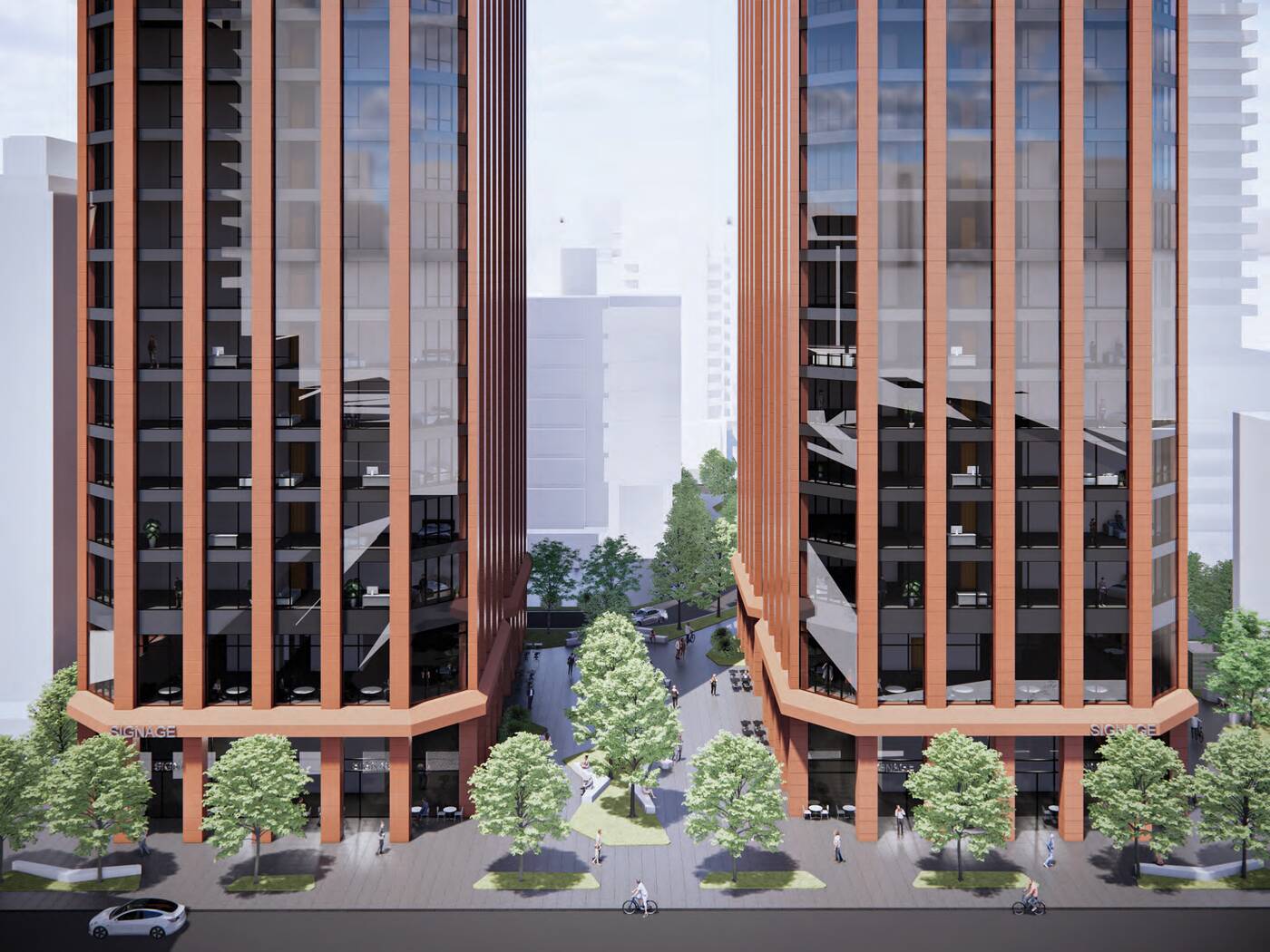

150 Eglinton East
The 58-storey towers at 110 Eglinton East will be linked via an enormous floating bridge spanning levels five through 10, framing a large open public space below and supporting an elevated residential amenity floor above.
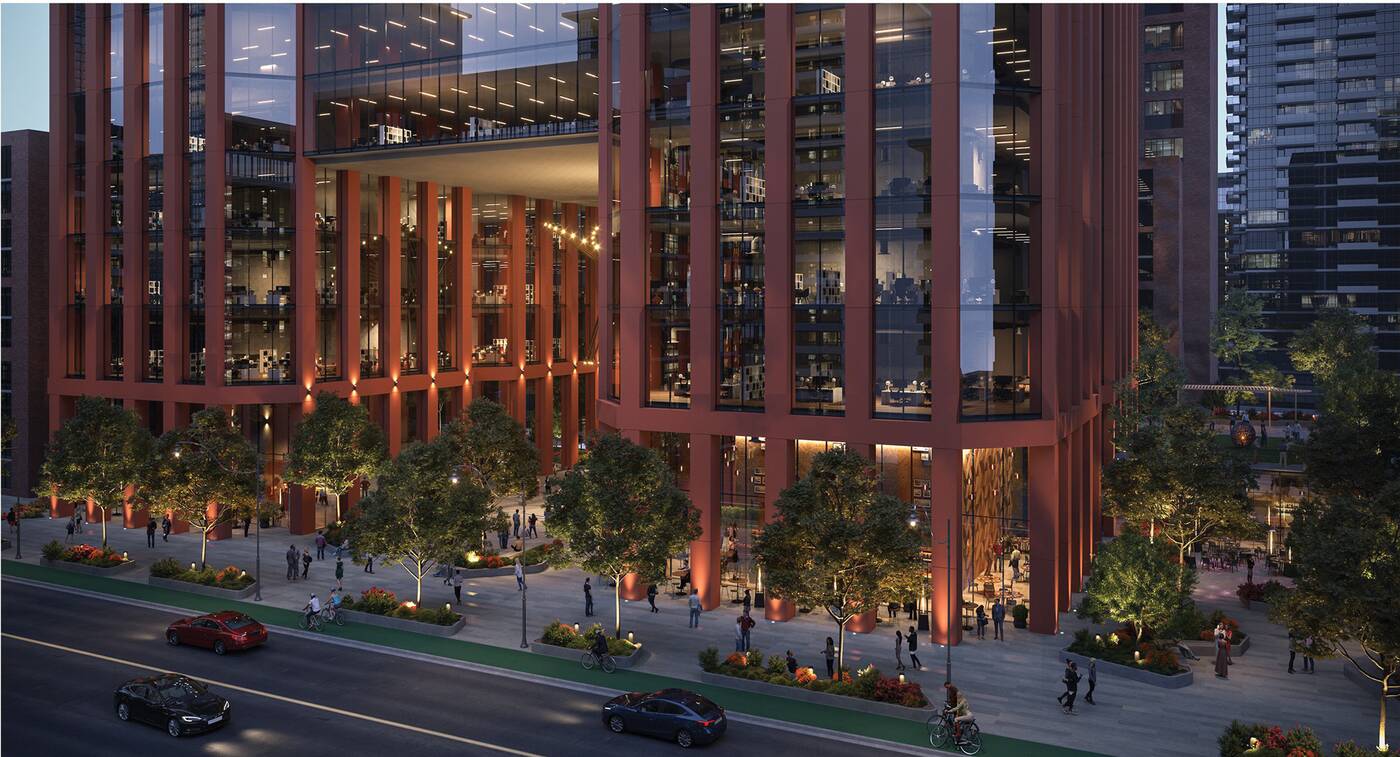

The 61-storey towers lack a skybridge, but will also feature amenity levels with panoramic views, including spaces on the 28th and 40th floors.
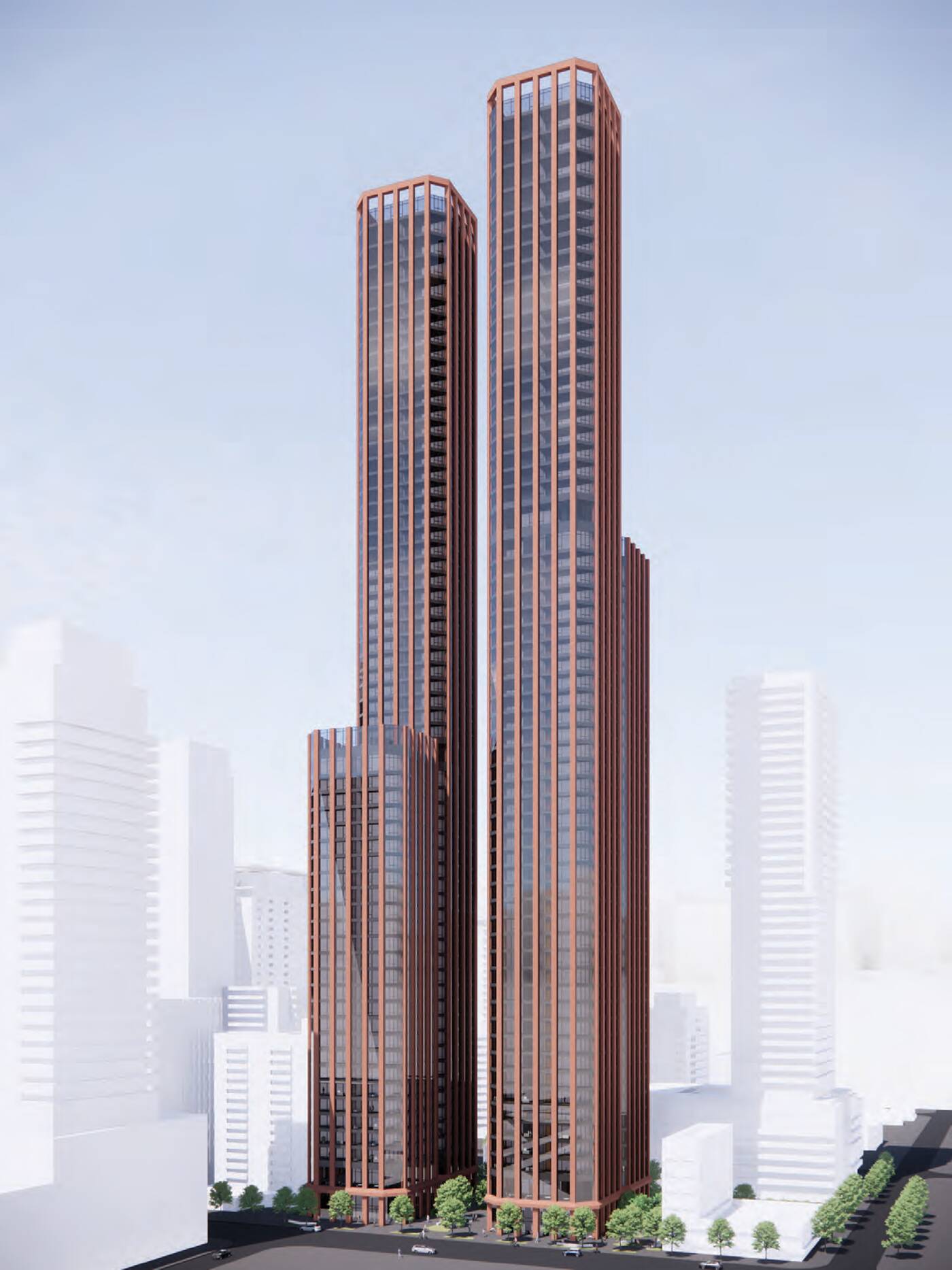

At heights of just over 236 metres, these four towers all stand taller than anything that exists in the neighbourhood as of 2024.
The combined proposals would add a staggering 3,364 condominium units to the neighbourhood, along with new retail and office space to maintain employment uses along this evolving corridor.
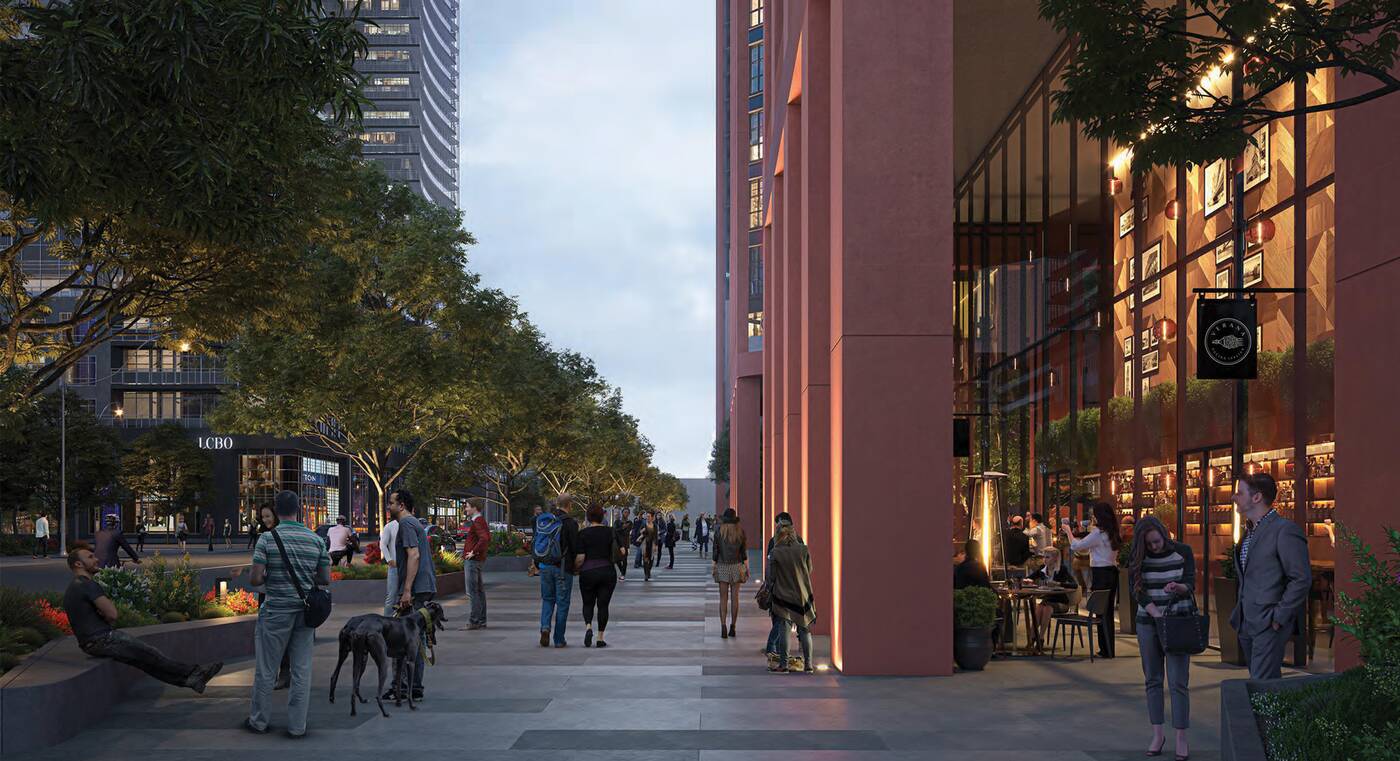

One standout of the proposals is a series of privately-owned publicly accessible spaces measuring over 5,000 square metres across the combined sites.


Among the publicly-accessible spaces proposed are the aforementioned area below the bridge at 110 Eglinton, along with pedestrian walkways that will allow foot traffic to filter through the block between Eglinton and Roehampton Avenue to the north.
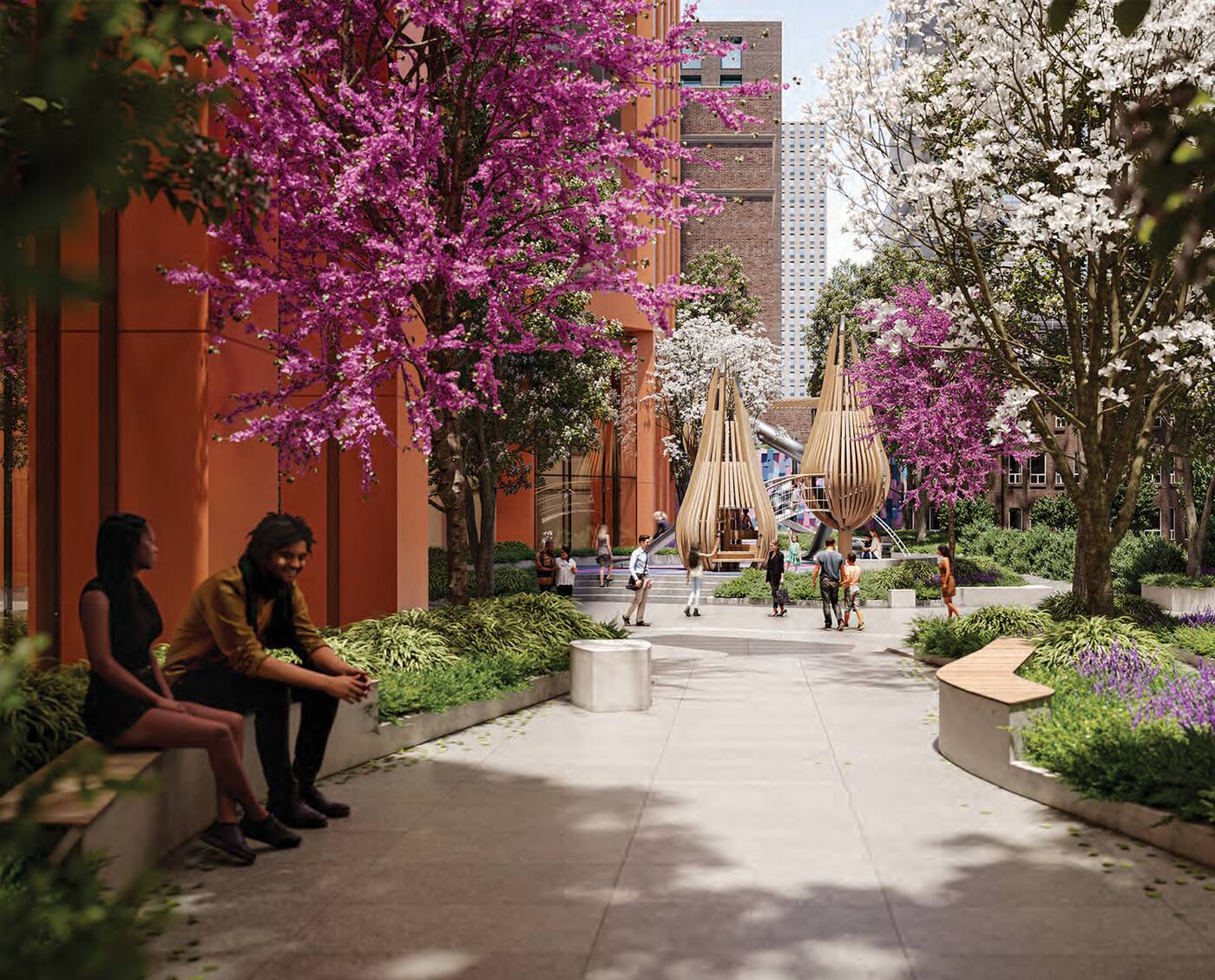

It’s the type of proposal one would expect to be met with significant local backlash. However, early feedback from the neighbourhood is surprisingly positive.
Local city councillor Josh Matlow took to X to voice his support for the project, calling it “genuinely exciting.”
“The architecture is beautifully designed,” said Matlow, hyping up locals with a promise that renderings of the new public space would wow the community. It’s remarkable for our community and city — like bringing Rockefeller Center to midtown Toronto,” said Matlow.




Real eState
This Toronto home is a ’90s decor trip but a steal at only $600K
|
|
If you’re a millennial and grew up in the ’90s, you’ll probably remember a fair amount of ’90s home decor trends that might still haunt you to this day.
There were sponge-painted walls, all-beige everything, wallpaper borders, oak cabinets, carpets in places where there shouldn’t be carpets, bedroom sets from big-box stores, Southwestern or Tuscan decor in homes that weren’t in Arizona or Italy, and the list goes on.
We thought we’d left those troubling times in the past, but 39 Hatherley Rd. really brings back all those memories.
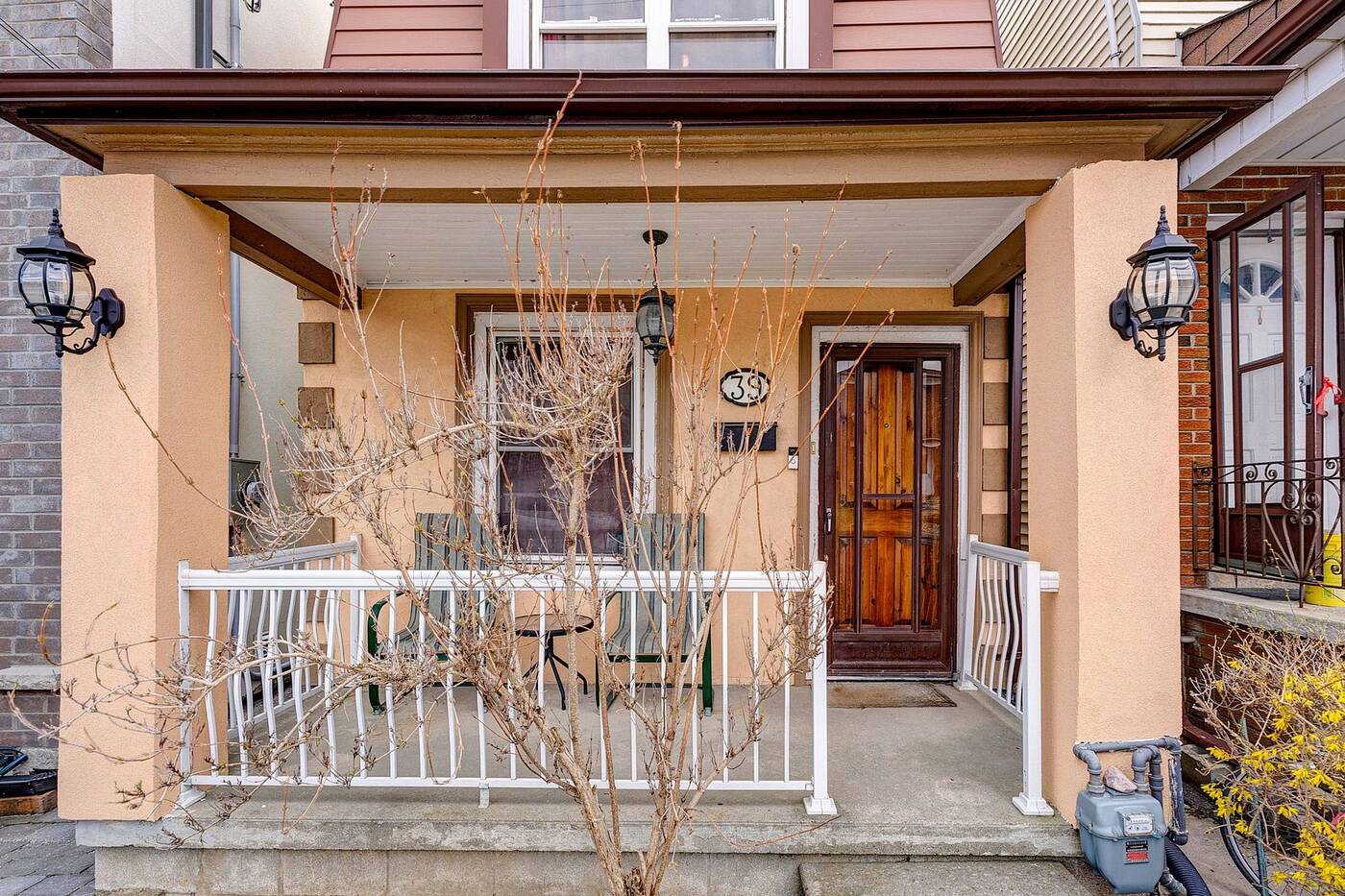

The front porch.
Somehow this two-bedroom, one-bathroom house hit almost every ’90s trend, except for carpets in the bathroom (phew!).
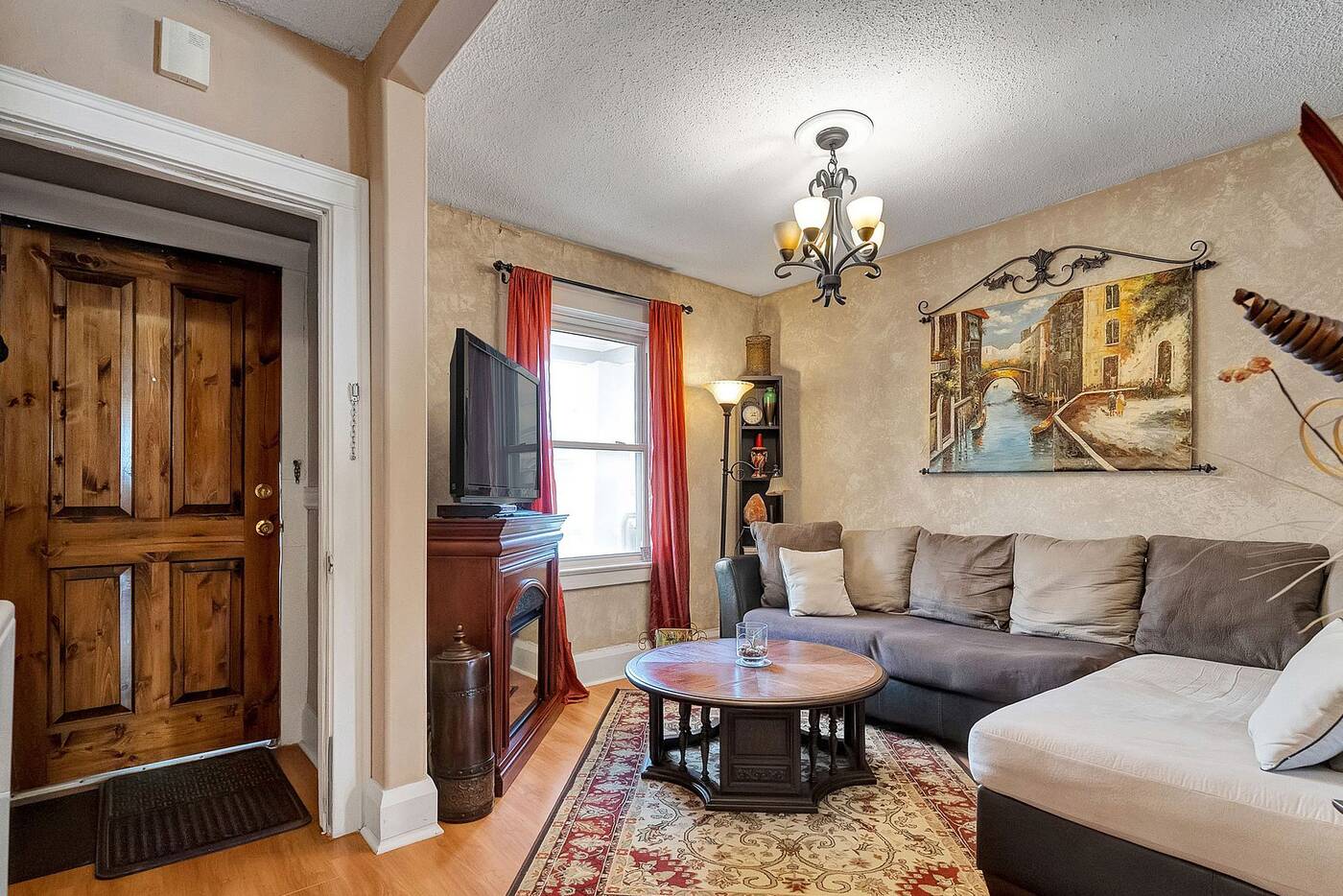

The entryway.
What’s weird is this house has changed ownership a few times since the 90s. In fact, it was most recently purchased in 2010 for $250,000.
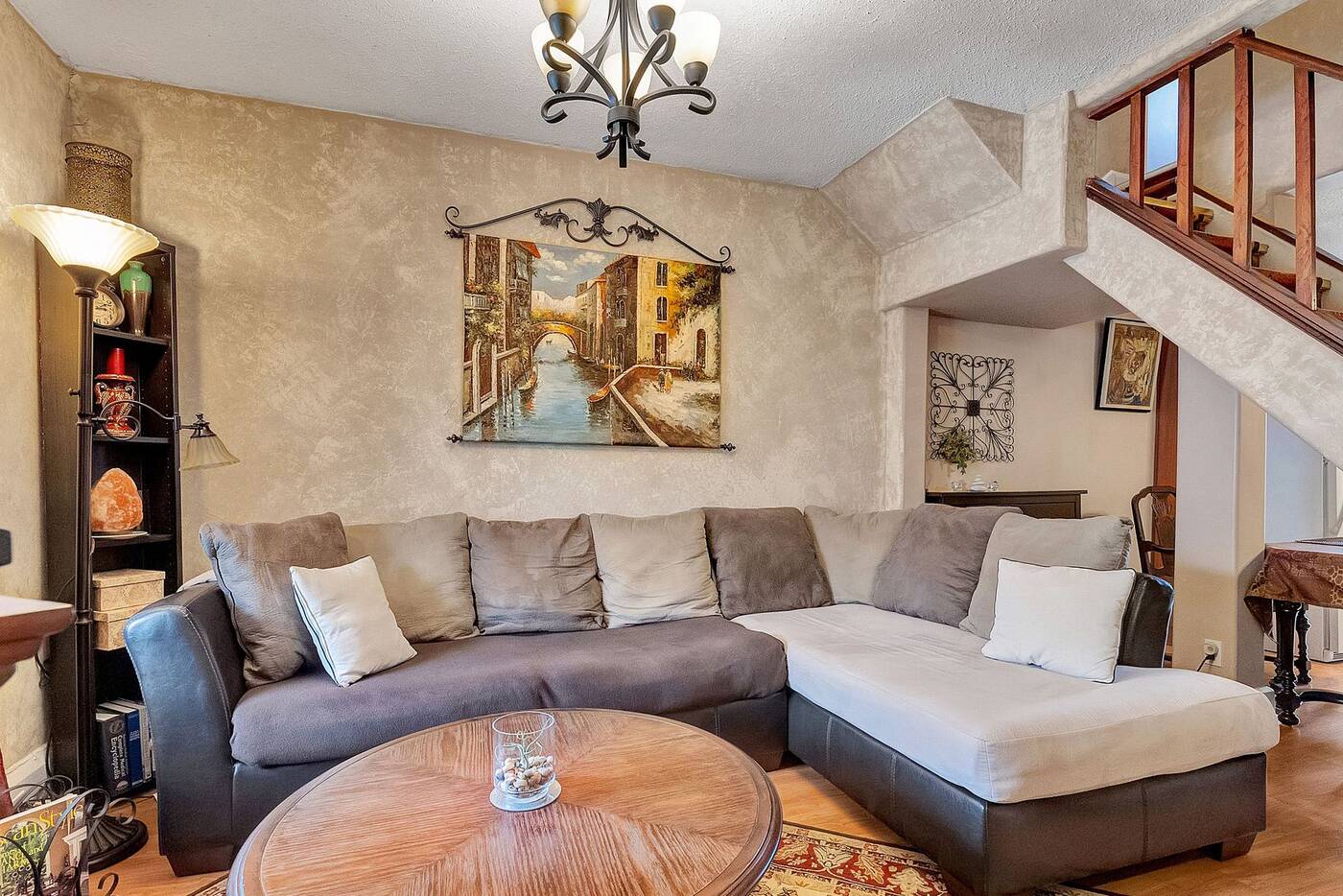

The living room.
So it’s somewhat surprising that when you look at past listing photos, almost nothing has changed. In fact, it seems they added the sponge-painted walls in 2010.
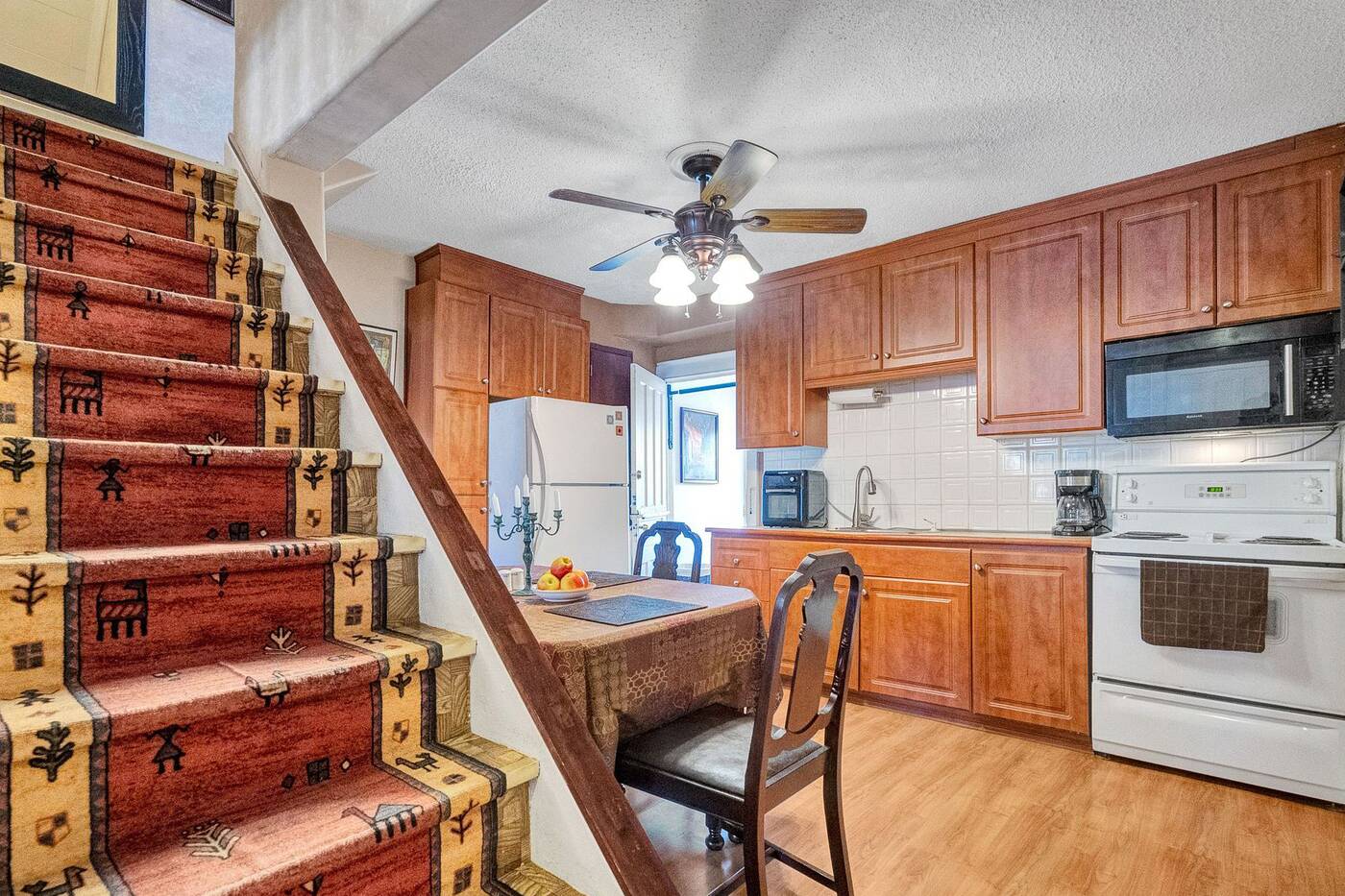

The kitchen.
But despite 39 Hartherley Rd. being a total throwback, this house is, as the listing says, “a diamond in the rough.”
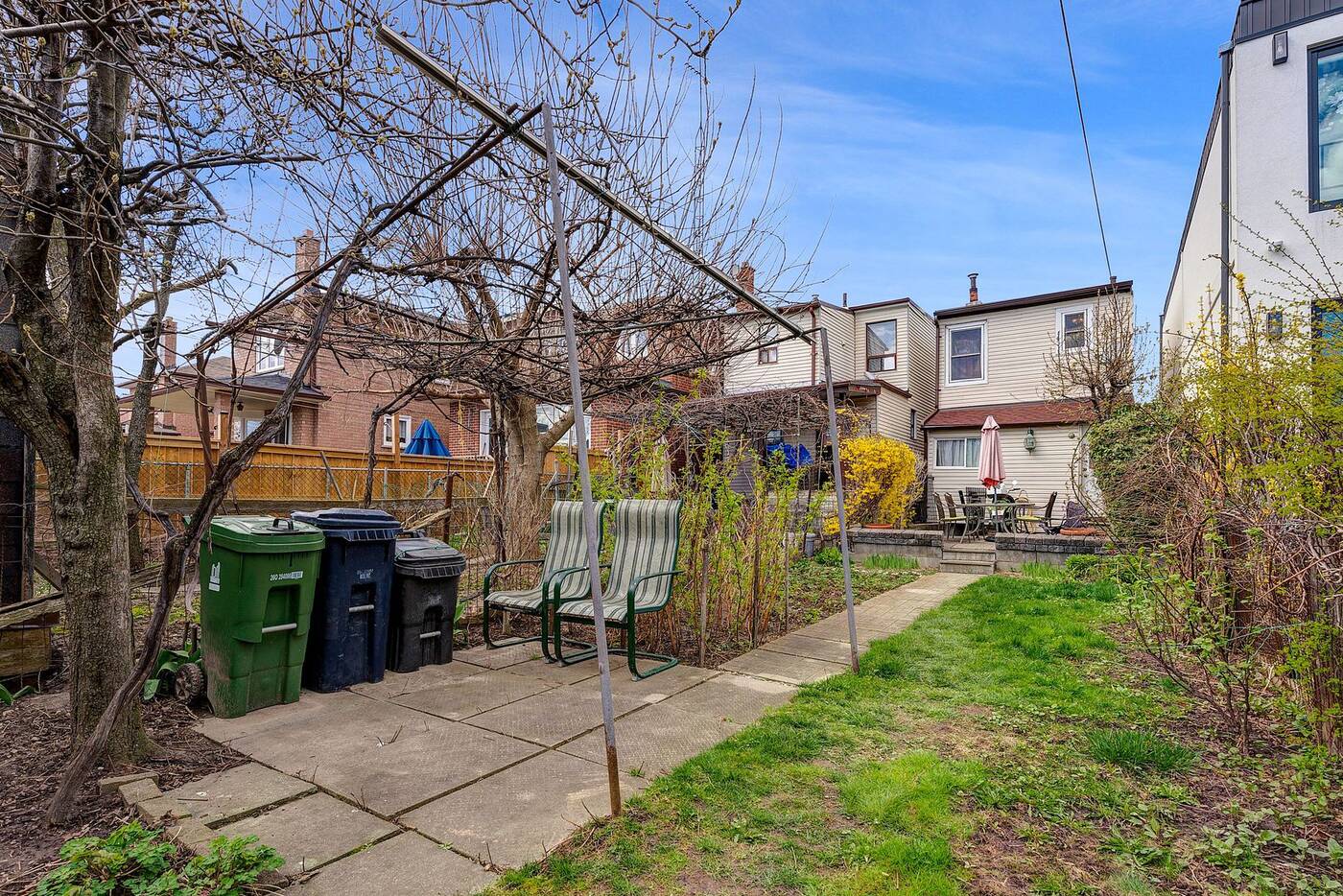

The backyard.
First off, it’s a detached house with a 125-foot deep lot in a good location.
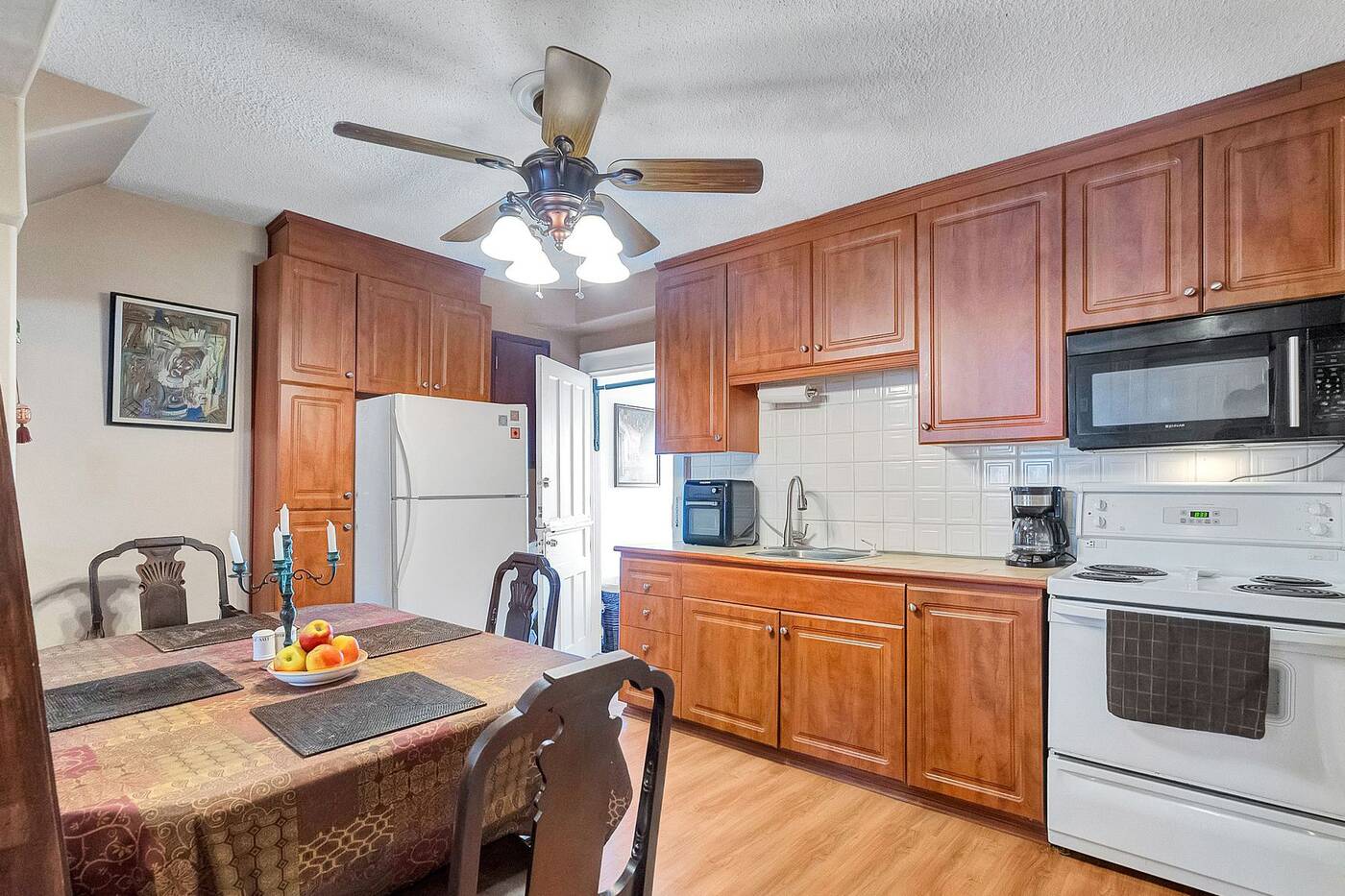

The kitchen has plenty of storage but, sadly, no dishwasher.
The main floor has a living room and kitchen with enough space for a dining table.
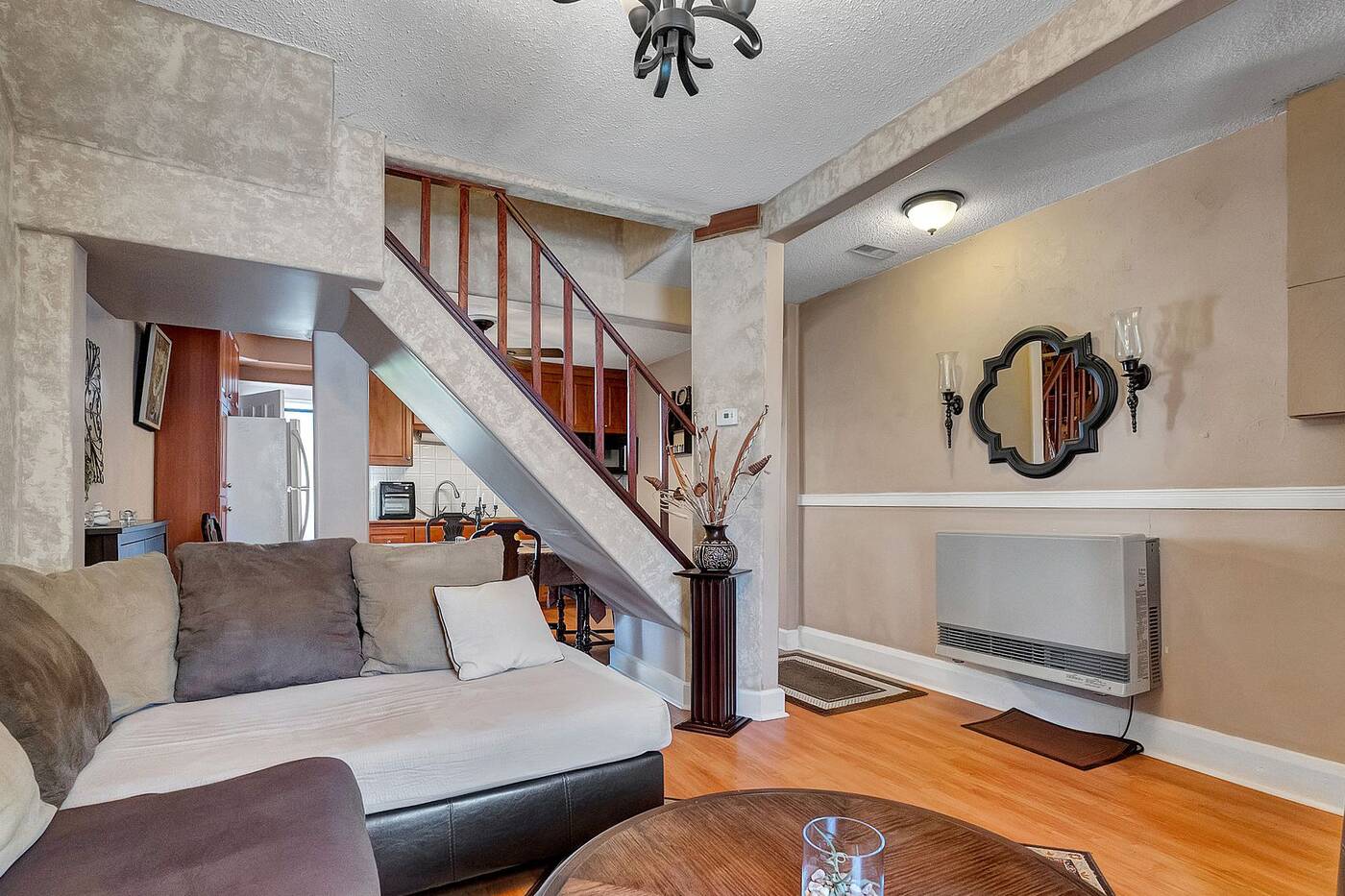

The main floor.
The layout is a bit awkward but the Dutch door off the kitchen is too cute.
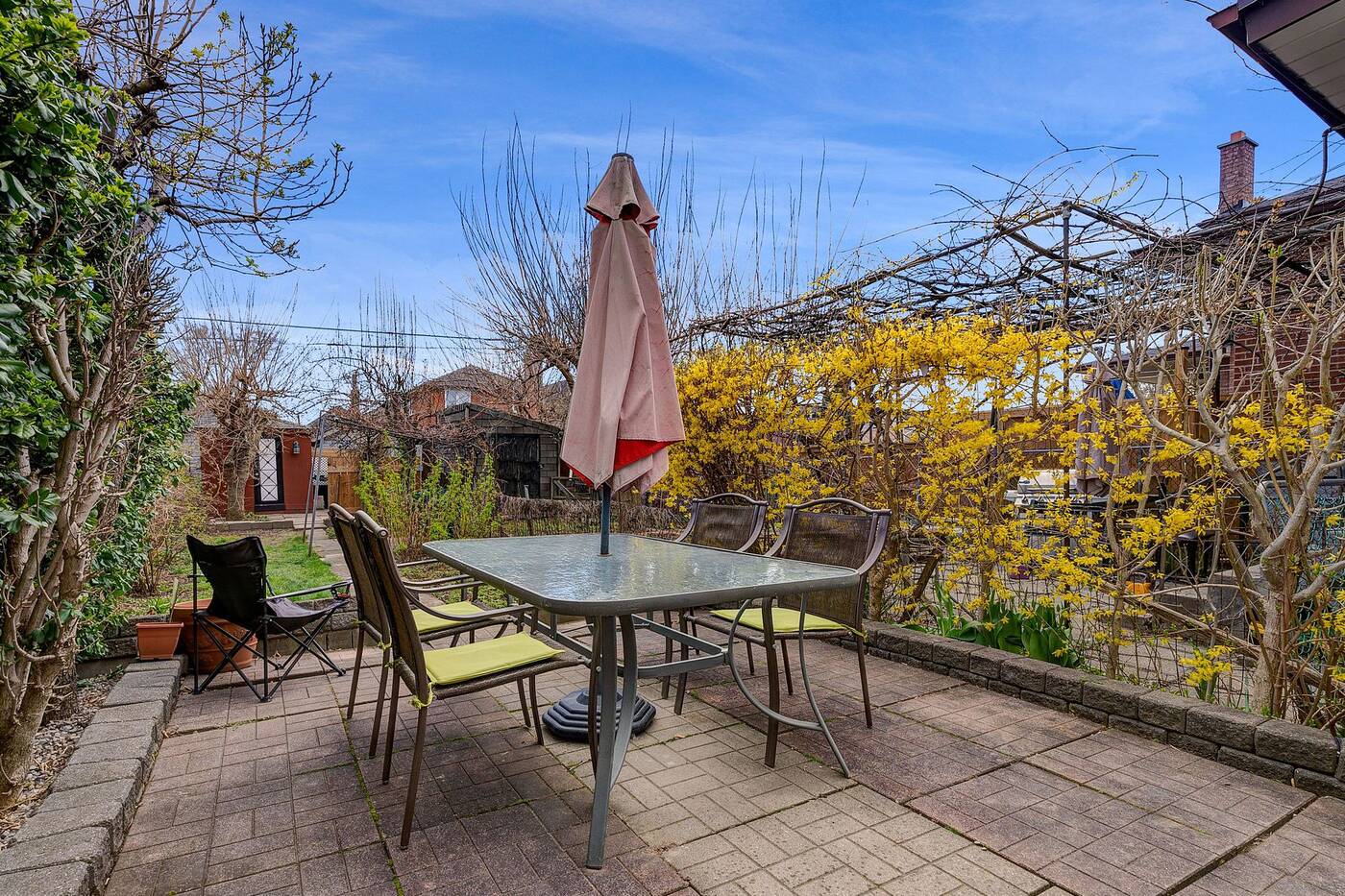

The back patio.
Off the kitchen is a laundry room/mud room that leads to the spacious backyard.
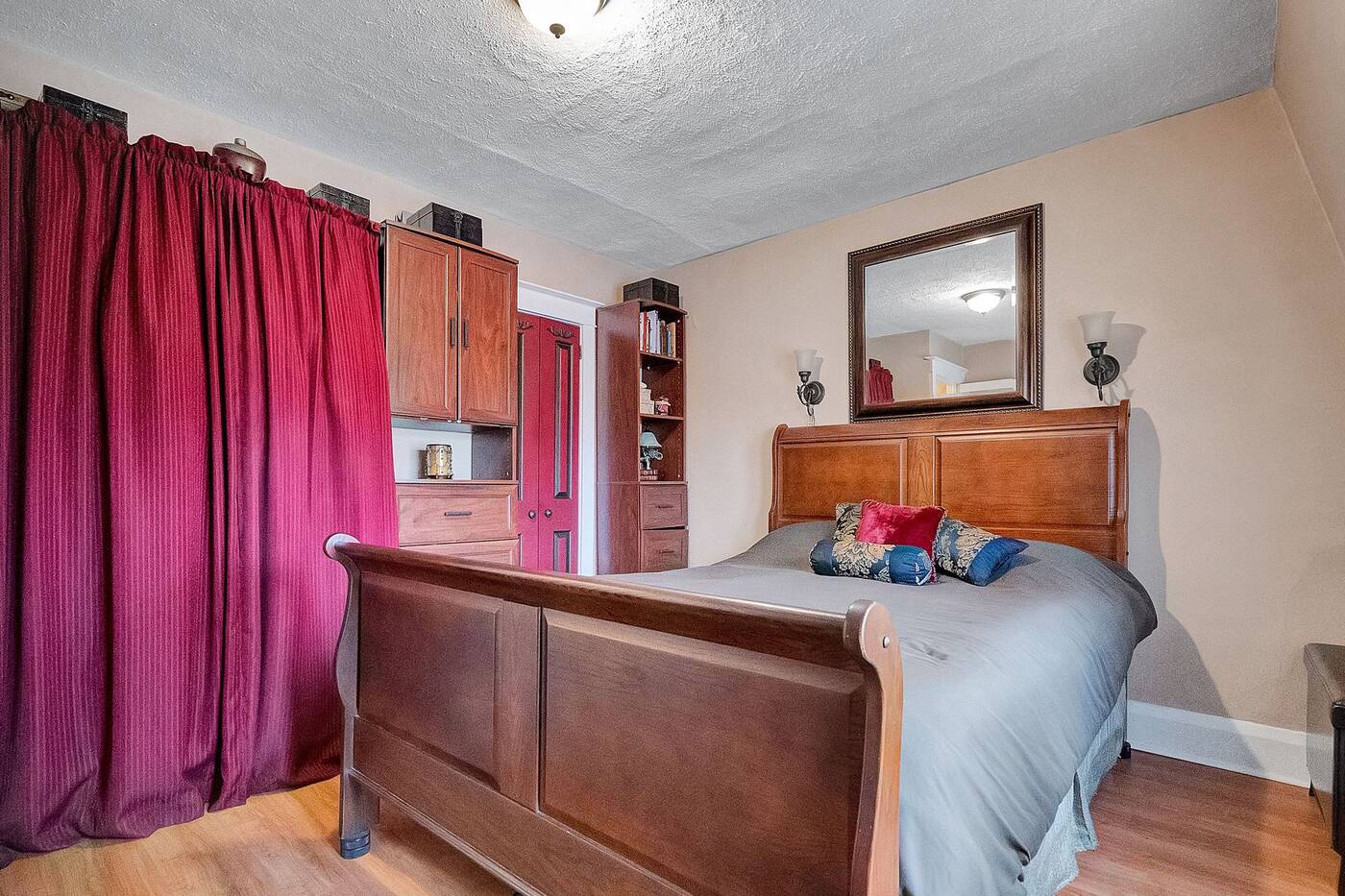

The primary bedroom.
Upstairs, there are two decently sized rooms and a small bathroom.
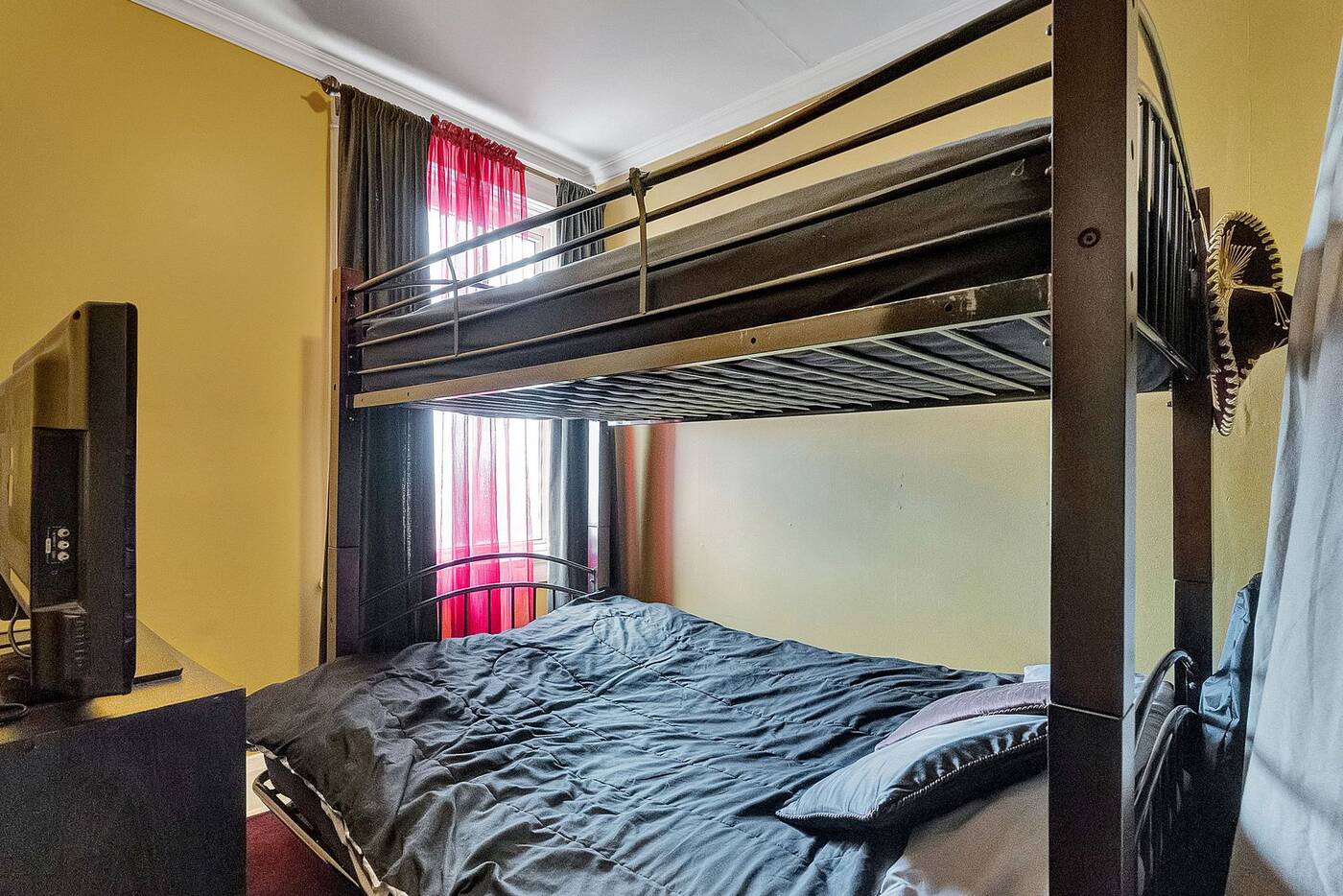

The second bedroom.
The house definitely needs some updating but the roof was done in 2015, the furnace is only a few years old, the electrical has been updated, and there’s room for expansion.
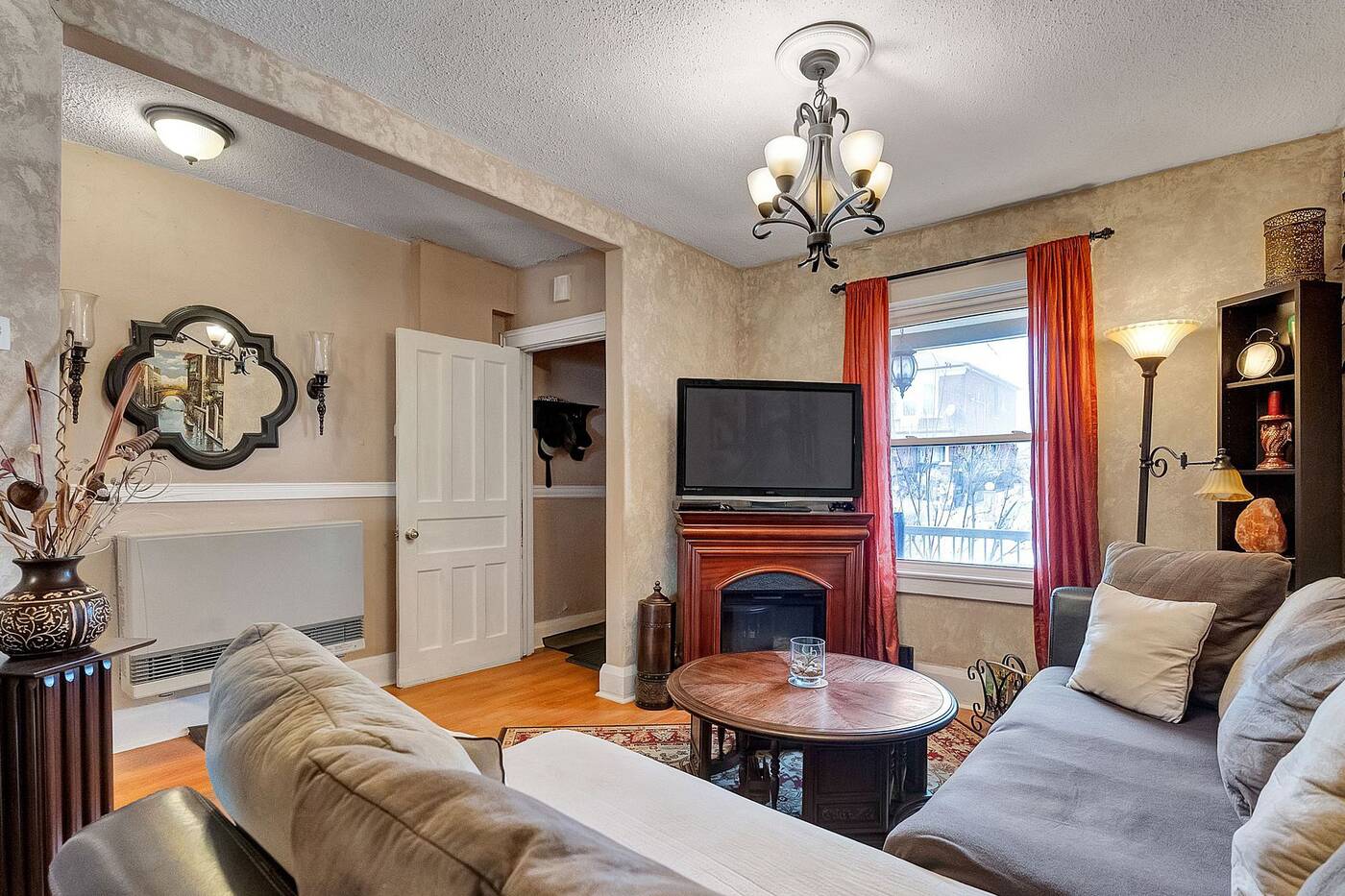

A fireplace in the living room.
Also, a coat of paint will do wonders to brighten up the all-beige ’90s aesthetic.
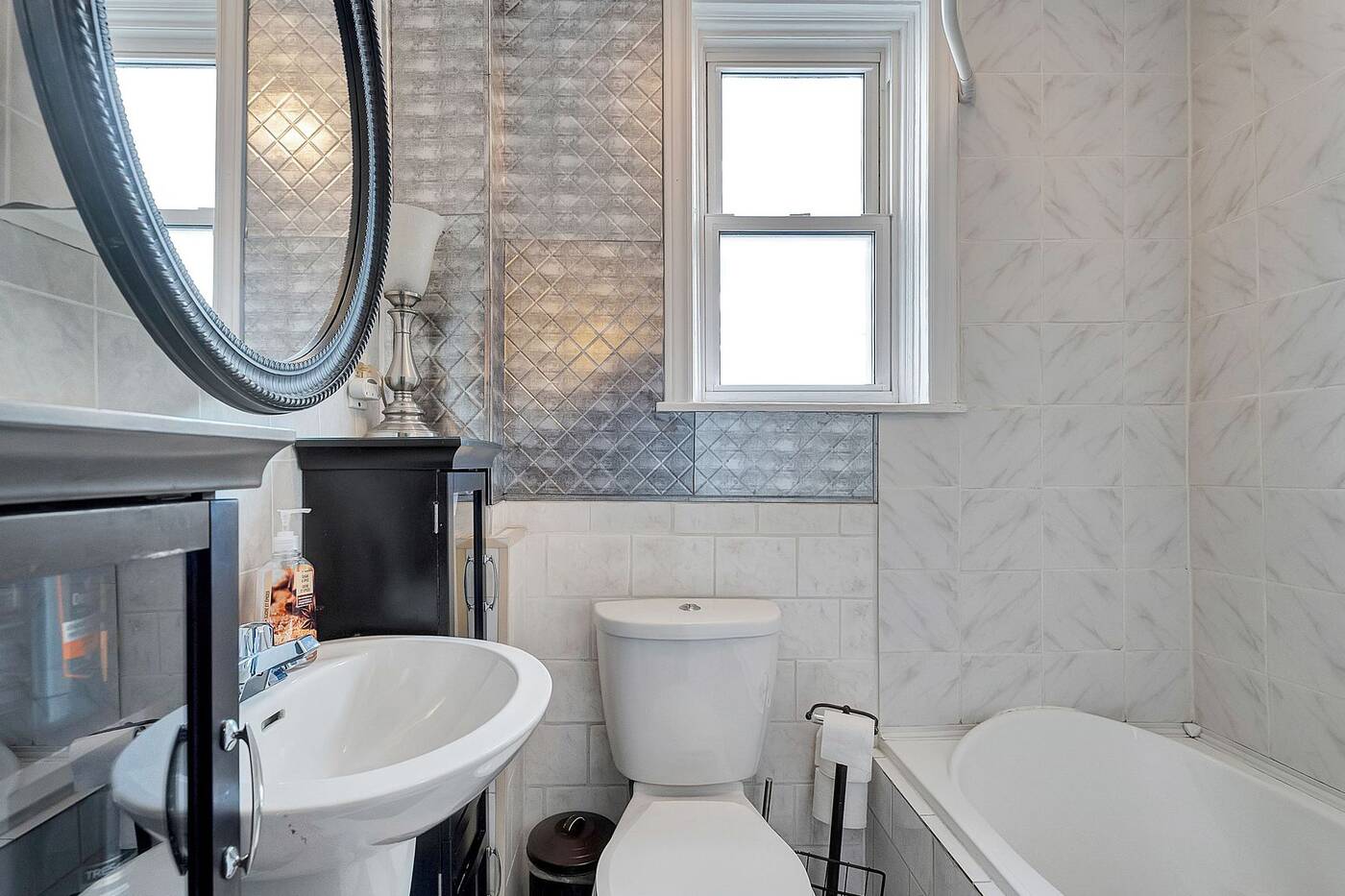

The small bathroom.
However, the biggest selling point of this home is the price point.
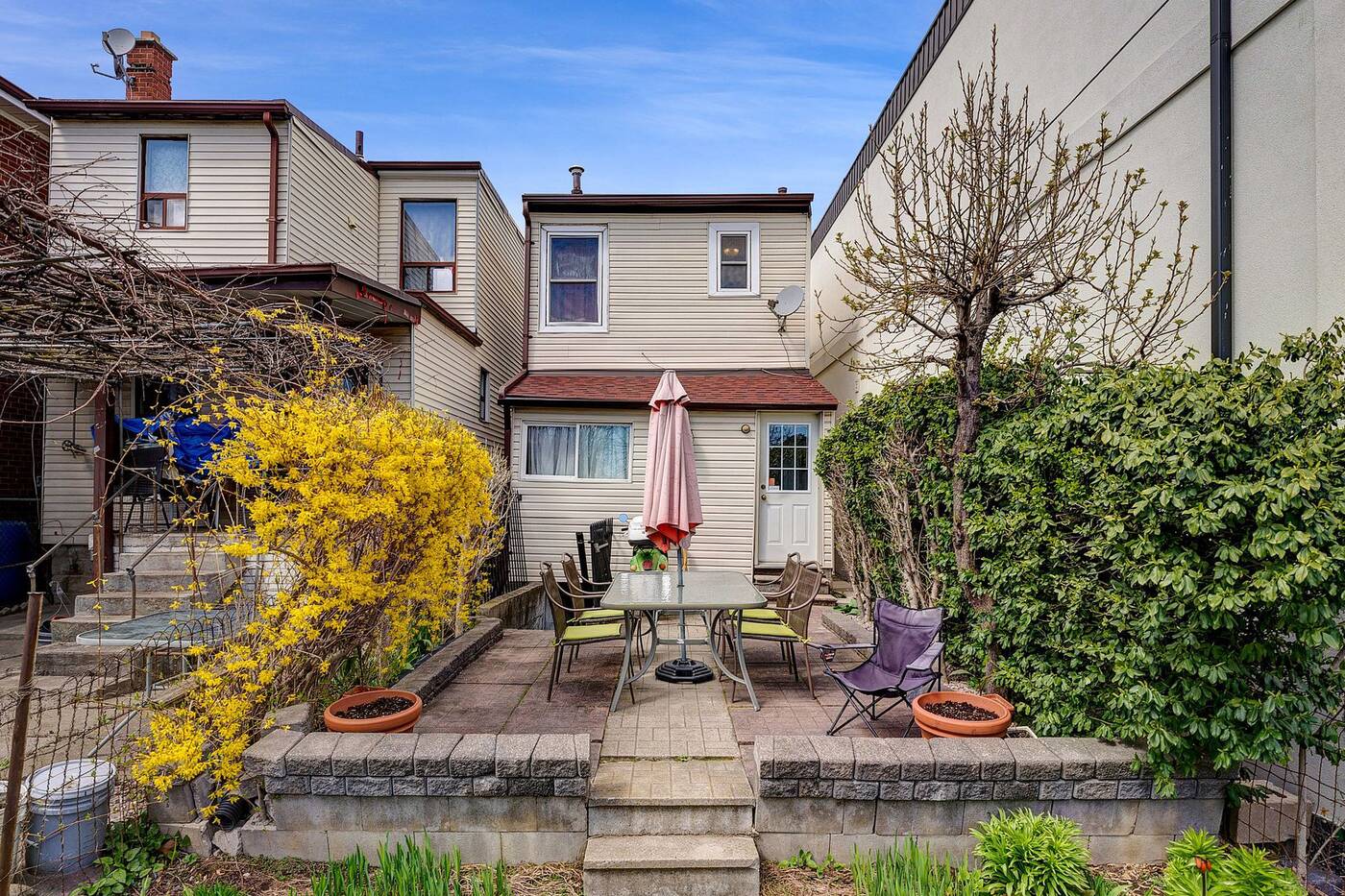

The back of the house.
39 Hatherley Rd. is listed for only $599,999, which is almost unheard of in Toronto, even if this place will probably go for closer to $700K.




-



 Health13 hours ago
Health13 hours agoRemnants of bird flu virus found in pasteurized milk, FDA says
-
Art19 hours ago
Mayor's youth advisory council seeks submissions for art gala – SooToday
-



 Health17 hours ago
Health17 hours agoBird flu virus found in grocery milk as officials say supply still safe
-
Media24 hours ago
Jon Stewart Slams the Media for Coverage of Trump Trial – The New York Times
-



 Investment17 hours ago
Investment17 hours agoTaxes should not wag the tail of the investment dog, but that’s what Trudeau wants
-
News18 hours ago
Peel police chief met Sri Lankan officer a court says ‘participated’ in torture – Global News
-



 Science21 hours ago
Science21 hours agoiN PHOTOS: Nature lovers celebrate flora, fauna for Earth Day in Kamloops, Okanagan | iNFOnews | Thompson-Okanagan's News Source – iNFOnews
-
Art18 hours ago
An exhibition with a cause: Montreal's 'Art by the Water' celebrates 15 years – CityNews Montreal



